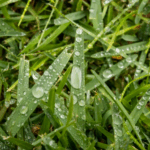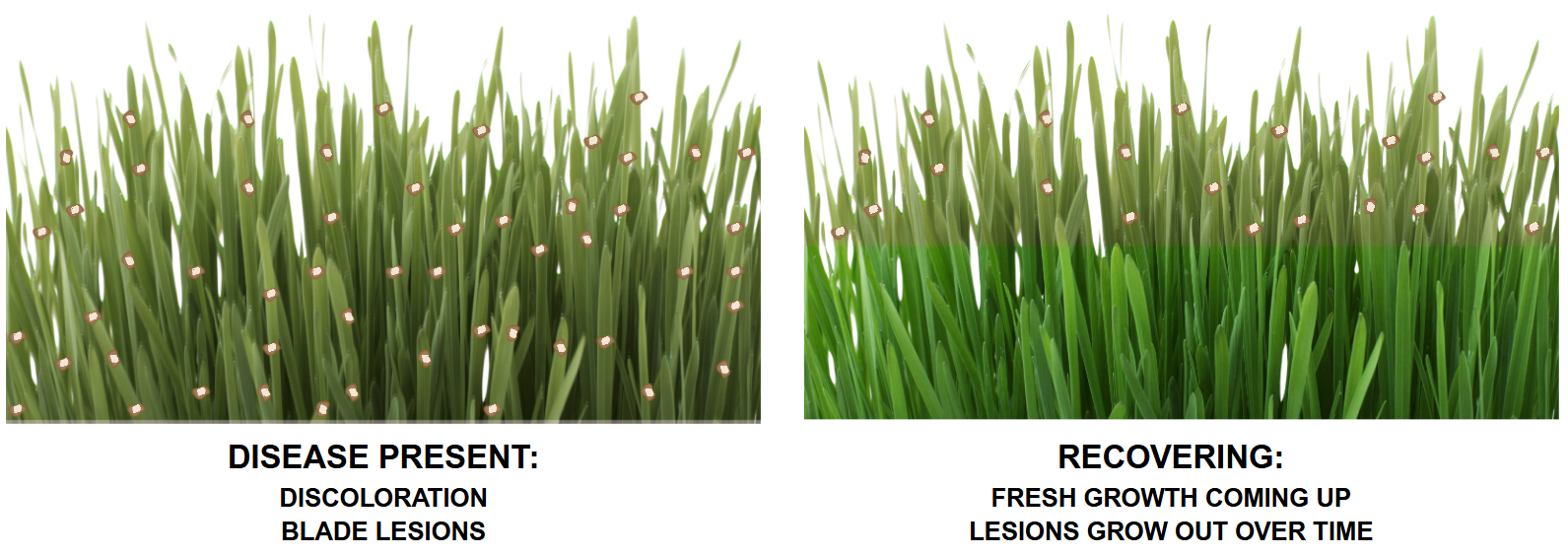Humidity is no stranger to Northeast Ohio summers—and neither is turf fungus. If your lawn looks less vibrant or patchy this time of year, it could be something more than heat or watering habits. Let’s break down how fungal diseases work, what signs to look for, and what your options are for getting things back on track.
What Causes Fungus in the Lawn?

Fungus is a natural lawn disease that develops when certain weather patterns line up:
- Prolonged humidity, especially overnight
- Rain or overwatering
- Periods of heat or drought stress, followed by a burst of moisture
When these conditions stack up, fungus spores that are already present in most lawns can begin to grow. That’s why even well-maintained lawns can sometimes show unexpected spots or fading color.
Some Lawns Are More Prone Than Others
It’s important to know that fungus can be a seasonal issue, even in well-cared-for lawns. Certain grass types—like fine fescues—are naturally more prone to fungal problems, especially in high-humidity conditions.
And while a strong fertilization program keeps your lawn thick and healthy, it doesn’t prevent fungus outright. These diseases are triggered by environmental factors beyond your control: overnight humidity, temperature swings, and rainfall patterns.
In some cases, fungus can be expected to reappear year after year in the same areas, especially in shaded or moisture-heavy sections of the lawn. What matters most is having a plan to address it when it appears.
Why Isn’t My Lawn Greening Up?
This is one of the most common mid-summer questions we get—and often, fungus is the answer. Fungal damage discolors the top of the grass blade, but doesn’t kill the roots. So even after conditions improve or treatment is completed, you won’t see immediate color recovery. That’s because the affected blades must be clipped away by regular mowing as healthy, green growth pushes up from below.
Visual Tip: A ‘bleached’ look may stay visible until mowed away.

When to Consider Fungicide
Fungicide treatments can be very effective—but they aren’t always necessary.
Minor Cases:
• Small patches, stable color, no rapid spread
• Can clear naturally with proper watering and improved weather
• Fungicide is optional if the look is bothersome, but not critical
Moderate to Major Cases:
• Spreading patches, blade lesions, discoloration that worsens over time
• Areas like brown patch or dollar spot become more aggressive
• Fungicide is recommended to halt disease activity and protect unaffected areas
Each application is typically part of a two-treatment course spaced a few weeks apart. While it won’t turn blades green again immediately, it will stop the spread and start recovery.
Fungicide Isn’t a Cure—It’s a Tool
It’s important to understand that:
• Fungicide stops the active disease but doesn’t prevent future outbreaks
• Like antibiotics, it treats symptoms—not immunity
• Future weather patterns can still trigger new activity if conditions align again
What About Specific Diseases?
Here are the most common fungal issues we see in our area:
• Leaf Spot – Spring–Fall, damp weather: May clear on own but fungicide can help
• Dollar Spot – Warm days, cool humid nights: Silver-dollar patches; fungicide often helpful
• Brown Patch – Summer, humid nights: Spreads fast; fungicide strongly recommended
• Pythium Blight – Hot, wet, humid conditions: Fast and damaging; treatment important
• Rust / Red Thread – Cooler seasons, damp: Harmless and self-clearing in most cases
Early Diagnosis Tip: When browning is spreading, contact your lawncare professional.

Smart Watering Can Help Prevent Fungus
Fungus thrives when grass stays wet too long. The #1 cause of that? Incorrect watering.
• Water deeply every 2–3 days—not daily
• Never water in the evening
• Water early in the morning to allow time to dry
• Resume watering 2–3 days after rain
In Summary
- Fungus is common in Northeast Ohio and tied to weather patterns
- Not all browning is from drought—fungus may be the hidden culprit
- Fungicide is a smart tool when needed—but not always necessary
- Patience, proper mowing, and smart watering make all the difference
Have questions? Send us a photo or give us a call—our team is happy to help you diagnose and treat the issue.
